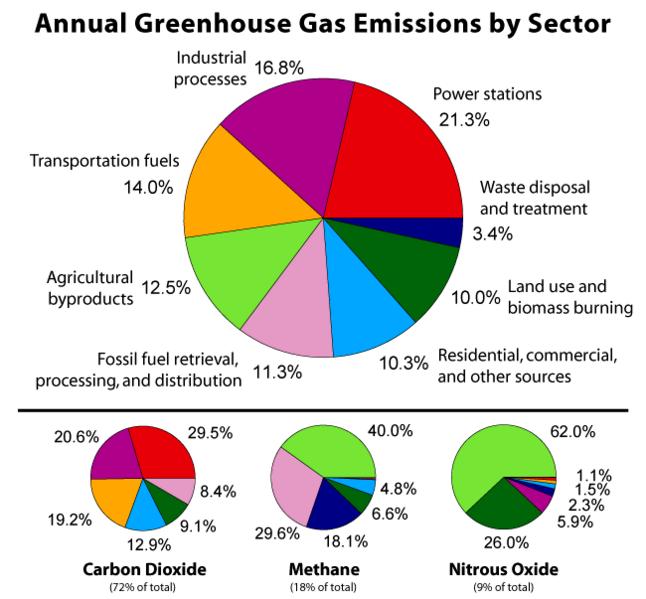What are the top 10 things we can all do to improve our carbon footprint?
Our carbon footprint is a measure of the amount of greenhouse gas emissions caused directly or indirectly by our lifestyles. There are many websites that allow you to measure your current carbon footprint. You’ll find a good calculator at www.nature.org/initiatives/climatechange/calculator.
A friend who posed the initial question suggested that the Top 10 list consist of actions that are relatively easy and economical. Fortunately, most of the top 10 things we can do are economical, but they may not all be easy.
Below, in order of importance, are the top 10 things you can do to lower your greenhouse gas emissions.
Top 10:
- Eat less meat
- Consume less fuel
- Support or switch to renewable energy sources
- Lower heating and cooling cost
- Buy food and goods that are sustainably grown or produced
- Use less water
- Improve lighting and appliance efficiency
- Reduce waste (e.g., packaging and disposable bags, bottles, and cups)
- Recycle
- Compost
Some of you may be surprised by the #1 item on the list. The order of items 2 through 10 is somewhat arbitrary and debatable, but there’s only one action that stands out for top billing. For the remainder of this article, we’ll explain why eating less meat has such a dramatic effect on greenhouse gas emissions. In other articles, we’ll dive into items 2-10 in more detail.
In determining the Top 10, it’s important to consider the primary sources of greenhouse gas emissions. The chart below was developed by Robert A. Rohde based on information from the Emission Database for Global Atmospheric Research. This chart shows the sources of man-made greenhouse gas emissions by contributing sector for the year 2000. The overall chart is further broken down into charts for each of the 3 primary greenhouse gases using the same colors to represent the eight contributing sectors.

In 1987, as our global population surpassed 5 billion people, we also reached another milestone. We crossed over the point at which the earth is able to regenerate the amount of global resources consumed within a year. We entered a new era with the ecological equivalent of deficit spending.
As our population grows every year and as more people around the world strive to live the ‘American Lifestyle’, our ecological deficit is growing rapidly.
According to a 2006 report by the United Nations Food and Agriculture Organization (FAO), meat production generates more greenhouse gas emissions (14-22 percent of global emissions) than either transportation or industry. Most of the emissions stem from beef production with a pound of hamburger resulting in about 32 pounds of CO2 emissions.
To tie this back in with the pie chart, here are the primary ways that meat production contributes greenhouse gases:
‘Land Use and Biomass Burning’ – the primary reason for the destruction of rainforests and other forest land is to clear land for cattle. It requires 20 times as much land to grow food for a meat-eater versus a strict vegetarian. As 10’s of millions of acres are burned or cleared each year, a massive amount of stored carbon dioxide is released into the atmosphere. Further, we lose the ongoing ability of these forests to absorb carbon dioxide and release oxygen.
‘Agricultural Byproducts’ – in large part, this is a nice way of saying cow burps, flatulence, and poop. As cows digest grass and grains, they produce methane gas as a byproduct. Pound for pound, methane gas is 25 times more potent than carbon dioxide at creating a greenhouse affect. The earth’s estimated 1.5 billion cows are believed to be the primary source for the steady and alarming rise in methane in our atmosphere. Another byproduct of cow manure is nitrous oxide, a greenhouse gas with 296 times the global warming potential of CO2.
‘Transportation Fuels’ – raising cattle requires a lot of fuel. From the tractors and trucks to grow and transport the grains to feed the cattle to the trucks transporting the steer and packaged meats, there are many moving parts. The fuel used to power the vehicles and produce the styrofoam and plastic packaging is another large contributor to greenhouse gases. According to a Department of Commerce study, one third of all raw materials in the United States are used to produce meat, dairy products, and eggs; the production and transport of these raw materials requires massive amounts of fuel.
‘Power Stations’ – about half of the world’s fresh water consumption is used for livestock production. When water is siphoned upstream of hydroelectric plants, it often results in a shift of power generation to more carbon-intensive methods such as coal-fired power plants. In many places, the inadequate supply of fresh water requires energy-intensive desalination of sea water. And, a significant amount of electricity can be saved by reducing irrigation water and the associated energy required to treat and distribute the water.
If you’d like to learn more and to gather more incentive to cut meat consumption, we recommend John Robbins’ landmark book – Diet for a New America. It will change your perspective.
The first item in the Top 10 is perhaps the easiest and most effective in so many ways. By reducing our meat consumption (especially beef), we can significantly reduce our carbon footprint. And, in addition to improving the health of the planet, taking this step can improve your personal health as well.
DwellSmart created the following presentation to summarize steps for Going Green.
